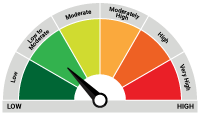Debt monthly view for March 2022
Posted On Tuesday, Apr 12, 2022
After 3 years of growth supportive monetary policy regime, the RBI has pivoted to manage inflation. It though has not yet changed the key policy rates. However, there were bits and pieces in the monetary policy statement of April 8th and the post-policy RBI media conference, indicating that the monetary policy regime has changed.
RBI’s focus going forward would be to control inflation and roll back some of the COVID time monetary policy accommodation. Its commentary was explicit in suggesting that the rate hiking cycle is about to begin.
We would expect a change in monetary policy stance to ‘neutral’ and a 25 basis points repo rate hike in June policy itself. If Crude oil price sustains above US$100/barrel, we would expect the repo rate to be around 5% before March 2023.
The RBI also made a key change in the liquidity management policy by introducing the Standing Deposit Facility (SDF) to absorb excess liquidity from the banking system without any collateral.
The SDF rate has now been set at 25 basis points below the policy repo rate, at 3.75%. Given the RBI can absorb all the excess liquidity at the SDF rate, this would create a floor for money market rates and would make the fixed-rate reverse repo (rate of 3.35%) redundant.
Since over 80% of surplus liquidity is getting absorbed through the variable rate reverse repo (VRRR) at a rate closer to 4%, we may not see any significant change in money market rates due to the introduction of SDF.
Currently, 1-2 months government treasury bills are trading near 3.70%. A reduction in the quantum of liquidity will push the money market rates higher towards the repo rate. However, we do not see money market rates sustaining significantly above the repo rate as overall liquidity condition may remain in surplus even after the normalization is completed.
The hawkish shift in the monetary policy spooked the bond markets. The yield on the 10-year government bond jumped 20 basis points after the policy, while that on the 5-year bond surged around 30 basis points.
Most of the medium to long-duration bonds are trading at a yield higher than their pre-pandemic levels when the repo rate was at 5.15%. At current levels of bond yields, much of the potential rate hikes and liquidity normalization are already priced in.
Instead, what we worry about are the severe demand-supply gap, geopolitical uncertainty and its impact on global supply chains and commodity prices, and the pace of rate hikes and balance sheet reduction by the US Federal Reserve.
The path forward for bonds is filled with uncertainty. Things are still evolving on the geopolitical front and the unwinding of ultra-easy monetary policy has just started. So, there will be surprises, there will be miscommunications and there will be market overreactions.
We may see the 10-year government bond yield rising to 7.3%-7.5% in the coming months as the supply pressure kicks in. A hope of RBI support will continue to put a cap on the long-term bond yields beyond that level.
Given the RBI will be reducing liquidity this year, any outright commitment to a sizeable bond-buying program along the lines of the Government Securities Acquisition Programme (G-SAP) looks unlikely. The RBI may intervene tactically to guide the market expectations from time to time, though the market will keep testing the RBI’s willingness and ability to support every yield spike.
In the Quantum Dynamic Bond Fund, we have been avoiding long-term bonds for some time due to our cautious stance on the markets. The defensive positioning helped the portfolio ride through the market sell-off over the last three months.
After the steep sell-off in the last one and a half months, valuations have become even more attractive on medium to long-term bonds. However, given the high uncertainty mentioned above, we will continue to avoid long-duration bonds as a core portfolio position.
We are keeping the bulk of our portfolio position in 2-5 years bonds which in our opinion, offer the critical balance between duration and accrual.
We would remain open and nimble to exploit any market mispricing by making a measured tactical allocation to any part of the bond yield curve as and when the opportunity arises.
As some of the uncertainties mentioned above fades away or bond yields move up to price those risks appropriately, we would look to add some allocation to medium to long-term bonds and increase portfolio duration.
We stand vigilant to react and change the portfolio positioning in case our view on the market changes.
In an environment of high uncertainty, it would be prudent for investors to avoid excessive credit and interest rate risk.
In our opinion, a combination of liquid to money market funds and short-term debt funds, and/or dynamic bond funds with low credit risks should remain as the core fixed income allocation.
After more than 100 bps sell-off in the bond market over the last one year, the return potential of debt funds has improved significantly. However, it would not be a smooth ride as markets will continue to have bouts of volatility.
We suggest bond fund investors have a longer holding period to ride through any intermittent turbulence in the market.
Source: Worldometer.info
| Name of the Scheme | This product is suitable for investors who are seeking* | Riskometer |
| Quantum Dynamic Bond Fund An Open-ended Dynamic Debt Scheme Investing Across Duration. A relatively high interest rate risk and relatively low credit risk. | • Regular income over short to medium term and capital appreciation • Investment in Debt / Money Market Instruments / Government Securities |  Investors understand that their principal will be at Low to Moderate Risk |
The Risk Level of the Scheme in the Risk O Meter is based on the portfolio of the scheme as on March 31, 2022.
| Potential Risk Class Matrix – Quantum Dynamic Bond Fund | |||
| Credit Risk → | Relatively Low | Moderate (Class B) | Relatively High (Class C) |
| Interest Rate Risk↓ | |||
| Relatively Low (Class I) | |||
| Moderate (Class II) | |||
| Relatively High (Class III) | A-III | ||
Disclaimer, Statutory Details & Risk Factors:
The views expressed here in this article / video are for general information and reading purpose only and do not constitute any guidelines and recommendations on any course of action to be followed by the reader. Quantum AMC / Quantum Mutual Fund is not guaranteeing / offering / communicating any indicative yield on investments made in the scheme(s). The views are not meant to serve as a professional guide / investment advice / intended to be an offer or solicitation for the purchase or sale of any financial product or instrument or mutual fund units for the reader. The article has been prepared on the basis of publicly available information, internally developed data and other sources believed to be reliable. Whilst no action has been solicited based upon the information provided herein, due care has been taken to ensure that the facts are accurate and views given are fair and reasonable as on date. Readers of this article should rely on information/data arising out of their own investigations and advised to seek independent professional advice and arrive at an informed decision before making any investments.
Mutual fund investments are subject to market risks read all scheme related documents carefully.
Please visit – www.quantumamc.com/disclaimer to read scheme specific risk factors. Investors in the Scheme(s) are not being offered a guaranteed or assured rate of return and there can be no assurance that the schemes objective will be achieved and the NAV of the scheme(s) may go up and down depending upon the factors and forces affecting securities market. Investment in mutual fund units involves investment risk such as trading volumes, settlement risk, liquidity risk, default risk including possible loss of capital. Past performance of the sponsor / AMC / Mutual Fund does not indicate the future performance of the Scheme(s). Statutory Details: Quantum Mutual Fund (the Fund) has been constituted as a Trust under the Indian Trusts Act, 1882. Sponsor: Quantum Advisors Private Limited. (liability of Sponsor limited to Rs. 1,00,000/-) Trustee: Quantum Trustee Company Private Limited. Investment Manager: Quantum Asset Management Company Private Limited. The Sponsor, Trustee and Investment Manager are incorporated under the Companies Act, 1956.
Related Posts
-

Debt Monthly for December 2025
Posted On Tuesday, Dec 02, 2025
As we approach the end of the calendar year, we find ourselves at a pivotal moment, with the market split on the likelihood of an upcoming rate cut.
Read More -

Debt Monthly for November 2025
Posted On Tuesday, Nov 04, 2025
October 2025 in a Nutshell: Monetary Policy and Demand–Supply
Read More -

Debt Monthly for October 2025
Posted On Friday, Oct 03, 2025
September was a pivotal month for fixed income markets, both globally and domestically.
Read More



